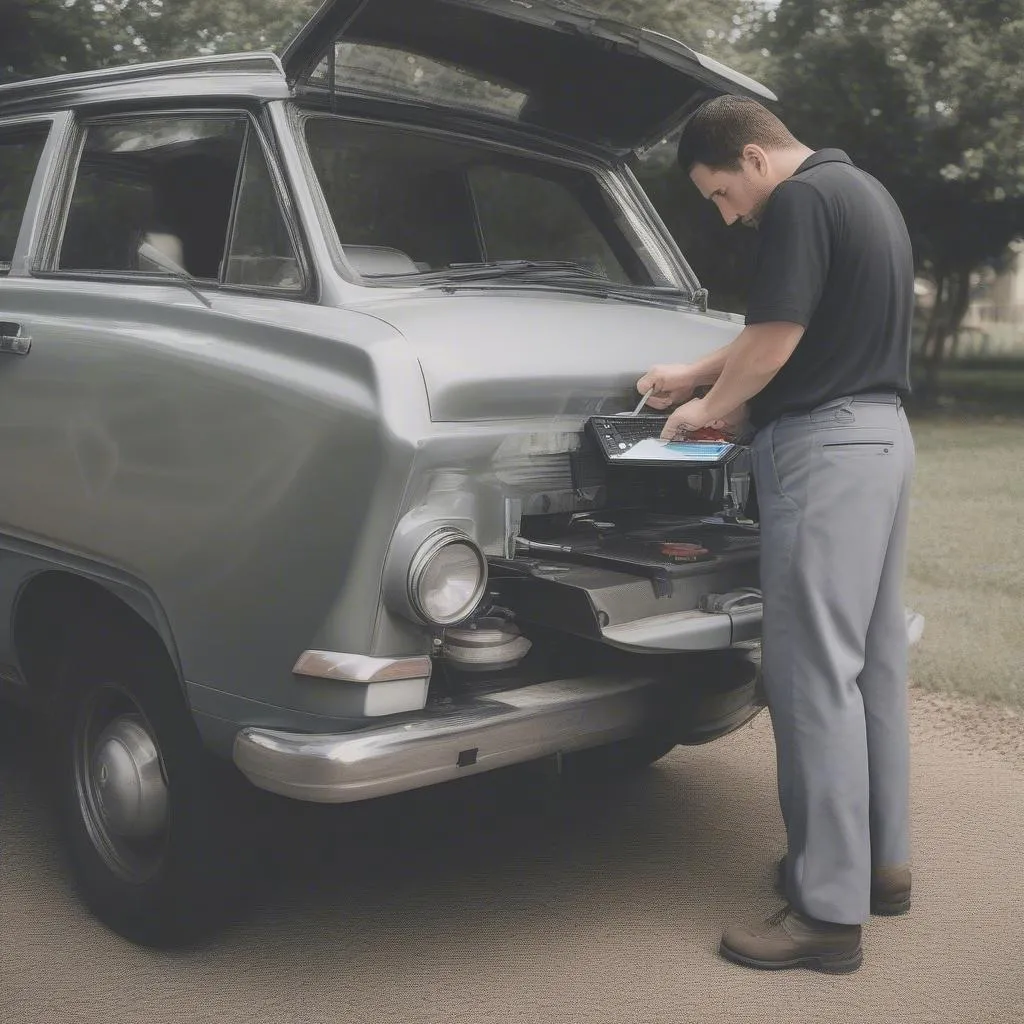Imagine you’re driving down the highway, and suddenly your car starts sputtering and making strange noises. You pull over, hoping it’s just a minor issue, but the problem persists. You know you need to take it to a mechanic, but what if you could get a head start and diagnose the problem yourself? This is where scan tools come in.
What Is a Scan Tool Used to Read?
A scan tool, also known as an OBD2 scanner, is a diagnostic tool that allows you to read and interpret the data from your car’s onboard computer. It essentially acts as a translator between the car’s electronic control units (ECUs) and you, the user.
Why are Scan Tools Important?
Think of your car’s ECU as the brain of your vehicle. It controls a vast network of sensors, actuators, and systems, ensuring your car runs smoothly. When a problem arises, the ECU stores error codes or trouble codes, which provide valuable insights into the root cause of the malfunction.
Understanding Diagnostic Trouble Codes (DTCs)
These diagnostic trouble codes (DTCs) are essentially error messages that the ECU generates when it detects a problem. DTCs are standardized across all car manufacturers, with each code representing a specific fault or issue. For example, a code like “P0171” indicates a lean condition in the fuel-air mixture, while a code like “P0300” signals a misfire in one or more cylinders.
How Scan Tools Decode the Information
Scan tools are equipped with software that translates these DTCs into user-friendly language. They display the error code, a description of the problem, and sometimes even provide suggested troubleshooting steps.
Common Questions About Scan Tools
What information can a scan tool read?
A scan tool can read a wide range of information, including:
- Engine performance data: Fuel trims, engine RPM, air flow rate, throttle position, ignition timing, and more.
- Transmission data: Gear selection, transmission fluid temperature, torque converter slip, and more.
- ABS system data: Wheel speed sensors, ABS module status, and more.
- Airbag system data: Airbag deployment status, sensor readings, and more.
- Climate control system data: Temperature settings, blower motor speed, and more.
Do I need a scan tool if I’m not a mechanic?
While scan tools are often used by professional mechanics, they can also be incredibly useful for DIYers and car enthusiasts. Even if you don’t have the expertise to diagnose a problem yourself, a scan tool can help you pinpoint the issue, saving you time and money on unnecessary repairs.
What is the best scan tool for my car?
The best scan tool for you depends on your needs and budget. Basic OBD2 scanners are relatively inexpensive and can read basic DTCs for most vehicles manufactured after 1996. More advanced scan tools, such as those with live data capabilities, are more expensive but can provide much more detailed information.
What are the benefits of using a scan tool?
Using a scan tool comes with several benefits:
- Early Problem Detection: Scan tools can help you identify potential problems before they become major issues, preventing costly repairs down the line.
- DIY Troubleshooting: If you’re comfortable with some basic car maintenance, a scan tool can empower you to troubleshoot problems yourself, saving you money on labor costs.
- More Efficient Repairs: By identifying the specific issue, a scan tool can help mechanics diagnose problems more accurately and efficiently.
- Increased Car Knowledge: Gaining insights into your car’s internal workings through a scan tool can help you become more informed about your vehicle and how it operates.
Using a Scan Tool: A Practical Example
Imagine you’re driving a 2018 Toyota Camry, and your check engine light comes on. You’re not sure what’s wrong, but you decide to use a scan tool to get some information.
You connect the scan tool to the OBD2 port under your dash, and it retrieves the following code: “P0171 – System Too Lean (Bank 1).”
This code indicates a problem with the fuel-air mixture, suggesting that the engine is receiving too much air and not enough fuel. This could be caused by a variety of issues, such as a faulty oxygen sensor, a leaking vacuum hose, or a problem with the fuel injectors.
Armed with this information, you can either try to troubleshoot the problem yourself or take your car to a mechanic with a better understanding of the issue.
Where to Get a Scan Tool?
You can find scan tools online or at most auto parts stores. Depending on your needs, you can choose from a wide range of options, from basic OBD2 scanners to professional-grade diagnostic tools. You can even find some dedicated scan tools that are specific to certain car brands and models.
 obd2 scanner
obd2 scanner
Where to Find More Information
For more information on how to use a scan tool and diagnose car problems, check out these resources:
- What Is a Scan Tool Used to Read?
- What App Works with the NewNow OBD-II Scan Tool?
- Innova 3160 ABS Scan Tool
Contact Us for Help
If you need help with any aspect of automotive diagnostics or have questions about specific scan tools, our team of experts is available to assist you 24/7. Just reach out via WhatsApp at +84767531508.
 diagxcar team
diagxcar team
Conclusion
Scan tools have become essential for both professional mechanics and DIY car enthusiasts. They provide invaluable information about your vehicle’s health, empowering you to identify problems early, diagnose issues accurately, and perform more efficient repairs. Whether you’re a seasoned mechanic or just curious about your car’s inner workings, a scan tool can be an incredibly useful tool.
Let us know if you have any questions or comments by leaving a comment below. And be sure to check out our other articles on automotive diagnostics and repair.
 diagxcar articles
diagxcar articles


